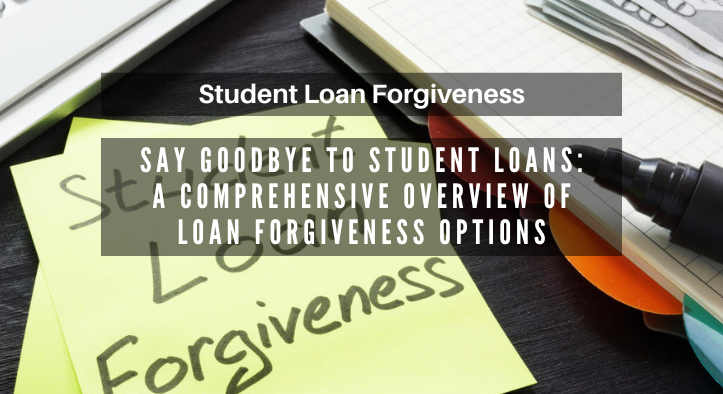Unlocking Financial Freedom: The Power of Student Loan Forgiveness Programs

Unlocking Financial Freedom: The Power of Student Loan Forgiveness Programs
Student loan debt is a major financial burden for many Americans. According to the Federal Reserve, student loan debt has reached an all-time high of $1.6 trillion. This staggering amount of debt can be overwhelming and can prevent individuals from achieving financial freedom. Fortunately, there are student loan forgiveness programs available to help borrowers manage their debt and unlock financial freedom.
What is Student Loan Forgiveness?
Student loan forgiveness is a program that allows borrowers to have their student loan debt forgiven or reduced. This can be done through a variety of programs, such as income-driven repayment plans, public service loan forgiveness, and loan consolidation. Each program has its own set of requirements and eligibility criteria, so it is important to research the different options to determine which one is best for you.
Benefits of Student Loan Forgiveness Programs
Student loan forgiveness programs can provide a number of benefits to borrowers. Here are some of the most common benefits:
- Reduced monthly payments: Many student loan forgiveness programs offer reduced monthly payments, which can help borrowers manage their debt more easily.
- Reduced interest rates: Some programs offer reduced interest rates, which can help borrowers save money in the long run.
- Elimination of debt: Some programs offer complete loan forgiveness, which can help borrowers become debt-free.
- Tax benefits: Some programs offer tax benefits, which can help borrowers save money on their taxes.
Eligibility Requirements
In order to qualify for student loan forgiveness, borrowers must meet certain eligibility requirements. These requirements vary depending on the program, but generally include:
- Proof of income: Borrowers must provide proof of income in order to qualify for some programs.
- Proof of enrollment: Borrowers must provide proof of enrollment in an eligible program in order to qualify for some programs.
- Proof of employment: Borrowers must provide proof of employment in order to qualify for some programs.
- Proof of residency: Borrowers must provide proof of residency in order to qualify for some programs.
Case Study
One example of a successful student loan forgiveness program is the Public Service Loan Forgiveness (PSLF) program. This program is available to borrowers who are employed in a public service job and have made 120 qualifying payments on their student loans. According to the Department of Education, over 500,000 borrowers have applied for the PSLF program and over $1 billion in student loan debt has been forgiven.
Conclusion
Student loan forgiveness programs can be a powerful tool for borrowers looking to manage their debt and unlock financial freedom. These programs can provide a number of benefits, such as reduced monthly payments, reduced interest rates, elimination of debt, and tax benefits. However, it is important to research the different programs and understand the eligibility requirements in order to determine which one is best for you. With the right program, borrowers can take control of their debt and achieve financial freedom.
